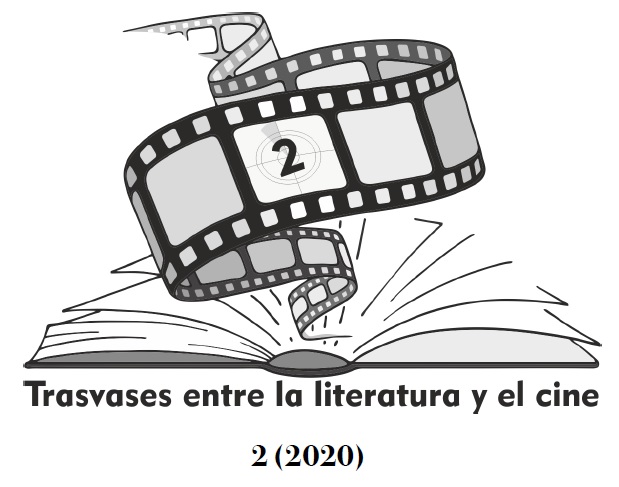Zorba the Greek or when Nietzsche danced the Syrtaki
DOI:
https://doi.org/10.24310/Trasvasestlc.vi2.9444Keywords:
Neo-Hellenic Literature, Greek Cinema, Greek Tragedy, Nikos Kazantzakis, Michael Cacoyannis, Euripides, Zorba the GreekAbstract
After the international success obtained by his filmic transposition of the tragedy of Euripides, Electra, director Michael Cacoyannis adapts for the cinema a famous novel by Cretan writer Nikos Kazantzakis, creating a work of art completely independent, which even surpasses the popularity of its literary source. This article analyses this film, Zorba the Greek, having into account not only the reading of the text that inspires it, but also other cultural references present in it such as the old Attic drama, represented on the screen by the Greek actress Irene Papas, Nietzsche's existentialist thinking, Italian Neorealism and the films of the golden years of Hollywood.
Downloads
Metrics
Publication Facts
Reviewer profiles N/A
Author statements
Indexed in
-
—
- Academic society
- N/A
- Publisher
- Universidad de Málaga
References
AGATHOS, Thanasis (2007), Apó to «Bíos kai Poleitía tou Aléxi Zormpá» sto «Zorba the Greek», Atenas, Aigókeros.
AGATHOS, Thanasis (2017), Níkos Kazantzakis ston kinimatografo, Atenas, Gutenberg.
BASEA, Erato (2015), «Zorba the Greek, Sixties exotica and a new cinema in Hollywood and Greece», en Studies in European Cinema, Londres, Routledge, págs. 60-76 [en línea: https://www.tandfonline.com/doi/abs/10.1080/17411548.2015.1015830. Fecha de consulta 02/03/2020].
BIEN, Peter (2000), «Nikos Kazantzakis’s Novels on Film», Journal of Modern Greek Studies, 18/1, págs. 161-169.
FOTOPOULOS, Vassilis (2007), Vassilis Fotopoulos, Atenas, Museo Benaki.
GARANTOUDIS, Evripidis (2008), «Zorba the Greek tou Mijali Kakogianni kai Bíos kai Politeía tou Alexi Zormpá tou Níkou Kazantzaki: mia sýnkrisi ypó ti skiá tis próslipsis tou kazantzakikoú érgou», Comparaison, 19, págs. 50-84 [en línea: http://rdo.upatras.gr/v1/public/files/440/file109.pdf. Fecha de consulta 02/03/2020].
GEORGAKAS, Dan (2005), «From Stella to Iphigenia: The woman-centered films of Michael Cacoyannis», Cineaste, 30/2, págs. 24-30.
HADJIKYRIACOU, Achilleas (2015), Masculinity and gender in Greek Cinema 1949-1967, Nueva York/Londres, Bloomsbury.
KARALIS, Vrasidas (2012), A History of Greek Cinema, Londres/Nueva York, Continuum.
KARALIS, Vrasidas (2016), Realism in Greek Cinema. From the post-war period to the present, Londres/Nueva York, I. B. Tauris.
KATSAN, Gerasimus (2016), «The Hollywood Films of Irene Papas», Journal of Modern Hellenism, 32, págs. 31-43 [en línea: http://journals.sfu.ca/jmh/index.php/jmh/article/viewFile/294/296. Fecha de consulta 02/03/2020].
KAZANTZAKIS, Nikos (2015), Zorba el griego (Vida y andanzas de Alexis Zorba), trad. de Selma Ancira, Barcelona, Acantilado.
KOLONIAS, Babis (1995), Mijalis Kakoyiannis. 36º Festival Kinimatografou Thessaloníkis, Atenas, Kastanioti.
MITROPOULOS, Aglae (1968), Découverte du cinema grec, París, Seghers.
REGENSBURGER, Dietmar (2005), «Are You Still in the Mood for Killing?: Mimetic Rivalry, Scapegoating and Sacrifice in Hitchcock´s Marnie, Cacoyannis´ Zorba the Greek and Pasolini’s Medea», en W. Palaver (ed.), Passions in Economy, Politics and the Media: In Discussion with Christian Theology. Beiträgezurmimetischen Theorie 17, Vienna, Lit Verlag, págs. 363-385.
SIAFKOS, Jristos (2009), Mijalis Kakoyiannis. Se proto plano, Atenas, Psijóyios.
STASINAKIS, Yorgos (2017), Kazantzakis-Zormpas. Mia aliziní filía, Atenas, Kastanioti.
TAYLOR, Timothy W. (1980), «Kazantzakis and the Cinema», Byzantine and Modern Greek Studies, 6, págs. 157-168 [en línea: https://www.cambridge.org/core/journals/byzantine-and-modern-greekstudies/ article/kazantzakis-and-thecinema/AE9F7F0E9AE0AA45A1CC3A3B2C413548. Fecha de consulta 02/03/2020].
TRIANTAFYLLIDES, Jason (2014), Michael Cacoyannis talks to Jason Triantafyllides, Atenas, Andy´s Publishers.
VALVERDE, Alejandro (2010), «La catarsis en la filmografía de Michael Cacoyannis», en F. Salvador Ventura (ed.), Cine y cosmopolitismo. Aproximaciones transdisciplinares a imaginarios visuales cosmopolitas, Santa Cruz de Tenerife, Intramar, págs. 11-24.
VALVERDE, Alejandro (2012), «Michael Cacoyannis, la sabiduría de la simplicidad», en F. Salvador Ventura (ed.), Cine y autor. Reflexiones sobre la teoría y la praxis de creadores fílmicos, Santa Cruz de Tenerife, Intramar, págs. 155-168.
VALVERDE, Alejandro (2013), «Actualización bibliográfica sobre la filmografía de Michael Cacoyannis», Estudios neogriegos, 15, págs. 191-206.
ZOGRAFOU, Magda y Mimima PATERAKI (2007), «The invisible dimensión of Zorba’s dance», Yearbook for Traditional Music, 39, págs. 117-131.
Downloads
Published
How to Cite
Issue
Section
License
All authors published in this journal accept the following copyright terms:
a. Authors retain their authors´ rights (copyright) and grant First Publication Rights to the journal, which whill be published under a the Creative Commons Attribution-NonCommercial-ShareAlike 4.0 International (CC BY-NC-SA 4.0) license. All about this license is available in the following link: <http://creativecommons.org/licenses/by-nc-sa/4.0>
b. Authors may separately establish additional agreements for the non-exclusive distribution of the version of the work published in the journal (e.g. including it in an institutional repository, or publishing it in a book) with an acknowledgement of its initial publication in this journal.
c. Authors are allowed and encouraged to disseminate their work electronically (e.g. in institutional repositories or on their own website) as this can lead to productive exchanges, as well as earlier and more extensive citation of published work.
The author is responsible for obtaining permission from the copyright holder when using copyrighted materials.
This electronic journal is published by University of Málaga (UmaEditorial), thus it is necessary to cite the origin of any partial or total reproduction.








22.png)










